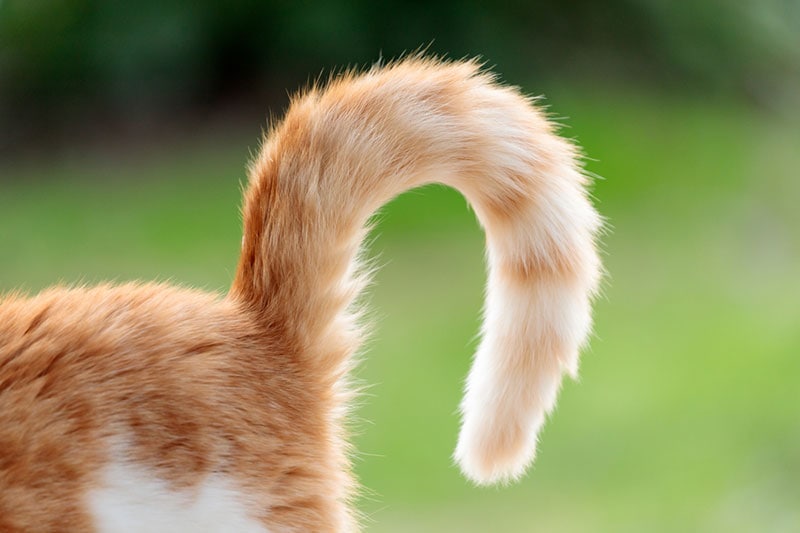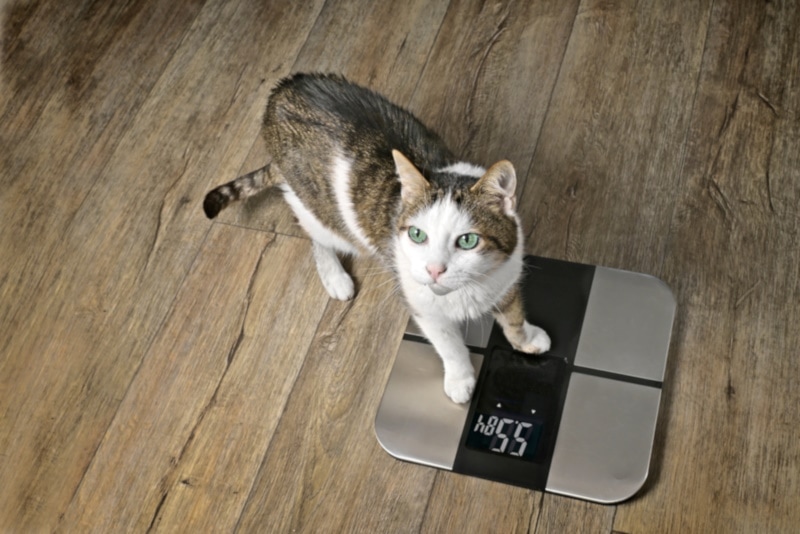How Long Does It Take for Cats to Give Birth? Vet-Approved Facts & Stages

Updated on
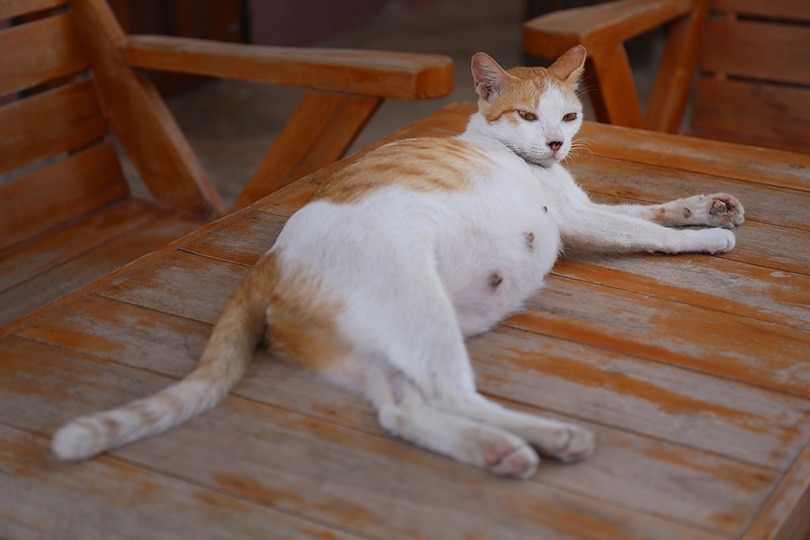
When people are pregnant, we buy every book under the sun and do tons of research to prepare for the big event. But when a cat is pregnant, we may not know when to start.
The process of giving birth is similar in all mammals, but the time it takes can vary. Female cats can become pregnant as young as four months old, and they go into heat every few weeks from spring to early fall.
Once pregnant, the process takes about 63-67 days. So, a cat can have multiple pregnancies and litters in one year.
Stages of Kittening
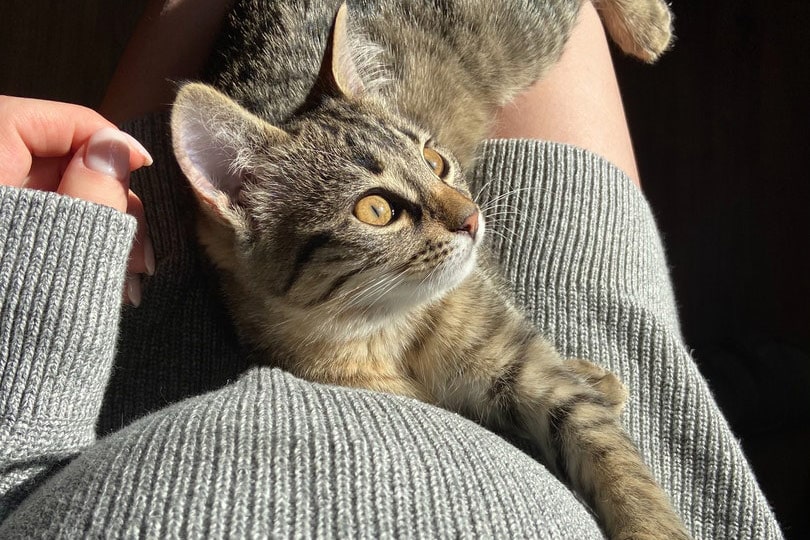
Birth is divided into three stages, and the second and third stages are repeated for each kitten. The time between the delivery of each kitten ranges from 10 minutes to 60 minutes. After the start of the second stage, birth is complete at around six hours, but it could take as long as 12 hours.
The first stage of kittening lasts around 36 hours, but queens that have had multiple litters could have a shorter first stage.
- Intermittent contractions
- Restlessness
- Scratching at bedding and panting
- Vaginal discharge, though rare
- Strong contractions
- The water bag appears at the vulva and bursts, which the cat then cleans up
- Active straining
- The kitten’s head comes out
- After the head emerges, one or two strains push out the rest of the kitten
- The queen breaks the bag, chews through the cord, and cleans the kitten
During the third stage of kittening, the membrane and placenta are passed. This usually happens immediately after each kitten is born, but on occasion, a few kittens will come out, followed by their membranes.
Normally, the queen will eat the placenta to hide evidence of the birth, but it’s important to try to count the number of placenta bags to ensure each one passes for each kitten. If any are retained, call your vet.
For about three weeks following birth, the queen may have a slight bloody discharge. This is normal. If the discharge is profuse, lasts longer than a week, has a green coloration, or smells foul, it could indicate a problem, and you should call your vet for advice.
Possible Complications of Kittening
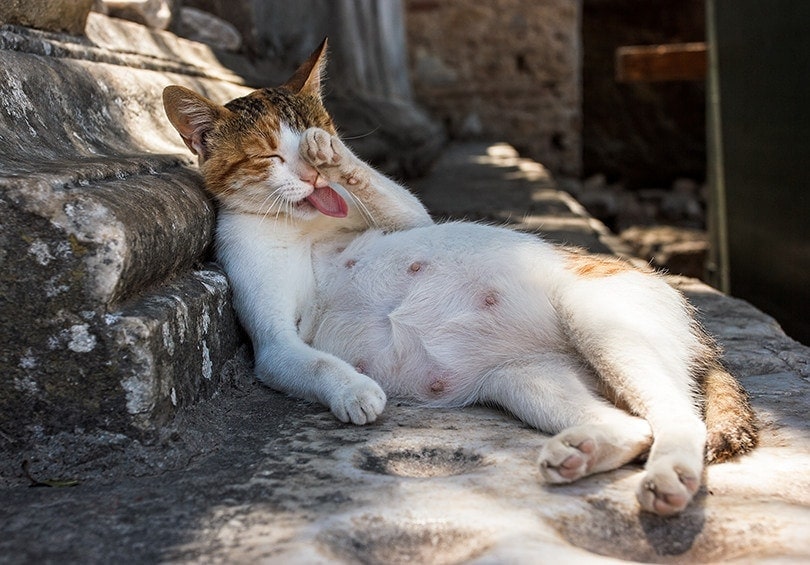
Like other animals, cats are able to deliver kittens without any help from humans. It’s best to stand back and let nature take its course.
If your cat experiences complications or difficulty, you should speak to your vet for guidance and advice.
- Provide warmth if your queen is avoiding the kittens. You can use a covered water bottle with warm water.
- If the queen doesn’t bite through the cord, you can tie it off with sewing thread about 3 cm from the kitten’s body and tear it between the ties. It’s important that your hands and the sewing thread are clean to avoid infection.
- If the queen doesn’t clean the kitten, you can clear the membrane with a soft kitchen towel. Wipe the kitten’s nose and mouth to clear them, then rub the kitten in circular motions to encourage breathing.
If you do need to help the kittening process, make sure to speak to your vet. Your involvement could lead to mismothering or a heightened risk of infection.
When to Call a Vet
- The first stage of kittening lasts longer than 24 hours with no straining
- Your queen has been straining for more than 30 minutes without producing kittens
- The first kitten has arrived, and no more kittens are delivered after an hour
- Your queen seems weak or lethargy
- There’s excessive bloody or green discharge with no kitten
- A kitten is stuck mid-delivery and can’t be helped by gentle pulling
If there are complications, kittens may need to be delivered by cesarean section. This may constitute an emergency, so contact your vet as soon as possible.
Conclusion
Fortunately, cats are just as self-sufficient during birth as with everything else. Your cat’s birth will mostly be you standing back and observing this miracle, but if your cat has complications or difficulty, it’s important to call your vet right away.
See also:
- Why Do Cats Purr After Giving Birth? Should I Worry?
- How Many Litters Can a Cat Have? Vet-Reviewed Facts & FAQ
Featured Image Credit: Boy67, Shutterstock



